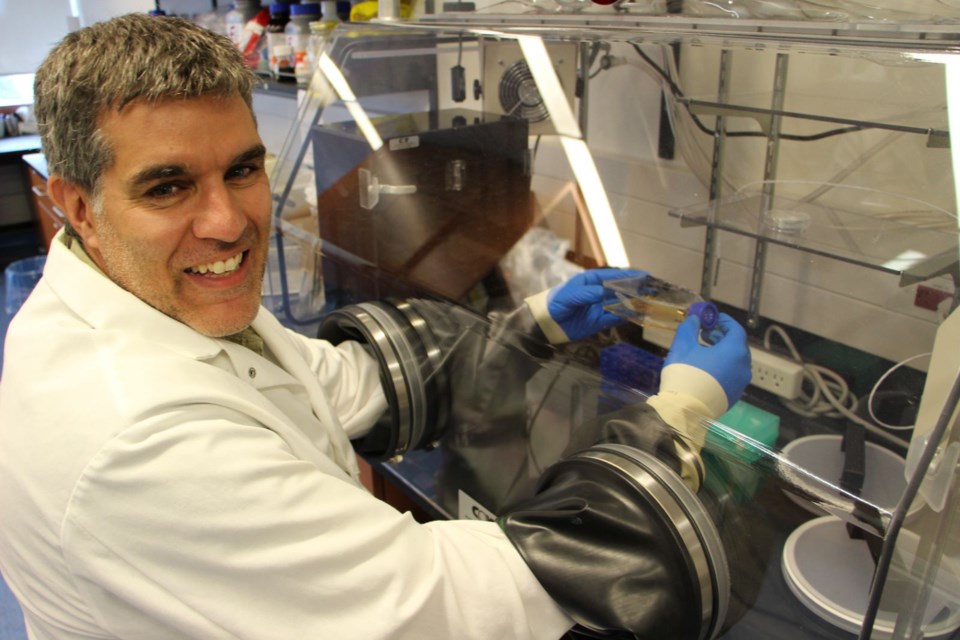Byram Bridle may not go down in history as finding the cure for cancer, but he’s part of a team whose research is showing promise as a new way of treating the disease.
Bridle, a pathobiology professor at the Ontario Veterinary College at the University of Guelph, is the lead author of a paper recently published in the Journal of Immunology that outlines his research with mice and how it has lead to clinical trials in humans.
In an interview, Bridle said while there have been significant advances in cancer treatment, “too many people still die. We want better, more effective treatment with fewer side effects.”
Bridle’s research found that injecting oncolytic viruses intravenously into the spleen allows the body’s own immune system to kill cancer cells more quickly and effectively.
Oncolytic viruses can kill cancer cells by taking advantage of the defects in cancer cells, Bridle said. By injecting the virus into the bloodstream, “they seek out and kill the cancer cells, no matter where they are,” he said.
That means practitioners don’t have to wait to determine the site of the cancer to begin treatment.
Current treatment -- surgery and/or chemotherapy -- can sometimes leave cancer cells behind, “and it’s the cells that escape that are the ones that kill,” Bridle said.
As well Bridle has developed a cancer vaccine booster shot that helps the immune system develop more cancer-fighting cells more rapidly.
“The key advantage is that it shortens the interval between the primary and relief vaccines,” he said. “It drives the immune response and doesn’t grant the cancer any relief.”
Bridle said trials on cats began after the success of the vaccine on mice, where tumours disappeared. Trials with dogs will begin at OVC in the fall and are also leading to clinical trials for people in Ottawa, Hamilton and Toronto.
Bridle said it’s because of two pan-Canadian research networks – the Canadian Oncolytic Virus Consortium and BioCanRx – that his findings have reached those working on cancer in humans.
He first published his initial observations in 2010 and by 2015 clinical trials had begun.
“In the world of research, that’s very a very fast progression,” he said.
“We (researchers in the networks) are united for the sole purpose of taking exciting pre-clinical findings and rapidly driving it to clinical trials. I can do the mouse work and historically, that’s where my work ended. Now I can pass it along the pipeline.”
The research may have applications for other diseases as well, Bridle said.
Bridle said he’s been personally touched by cancer and seeing it in children and the toll treatment can take on them has motivated him to help find a cure.
“We are living in a world where diseases seem to be growing faster than treatment, so we need to outpace them. Time is of the essence. It’s a race we have to win.”
